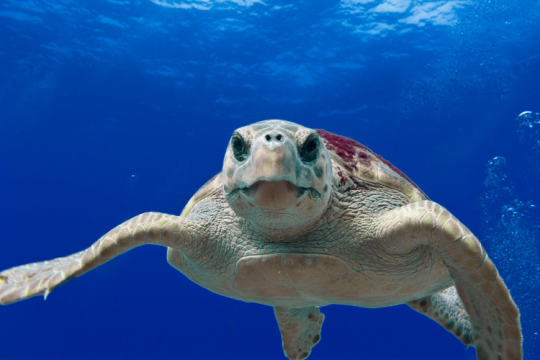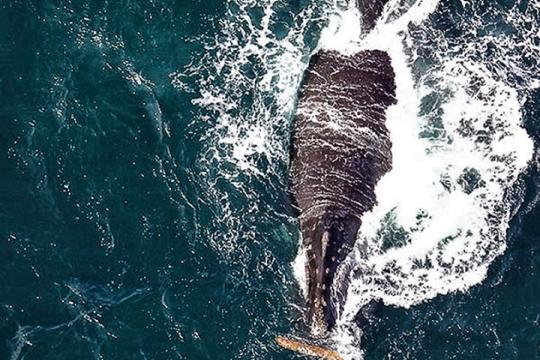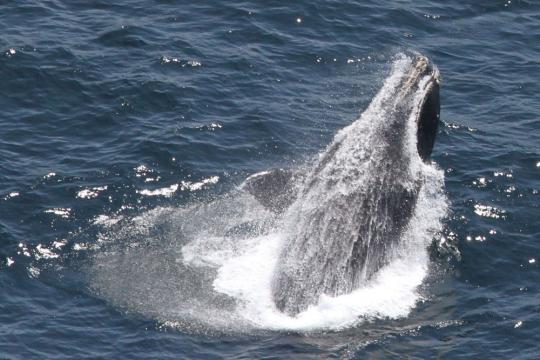How Is An Animal Or Plant Identified For The Endangered Species List
How Do Species Become Protected Under the Endangered Species Act?
Earlier a species can receive the protection provided by the Endangered Species Deed (ESA), it must first exist added to the federal lists of endangered and threatened wild fauna and plants. A species is added to this list when we determine that it has met definition of endangered or threatened nether the ESA. Species may besides exist removed from the listing (i.eastward., "delisted") when they no longer crave ESA protection, or have a change in status (i.e., "reclassified", for example, from threatened to endangered).
Under the ESA, a species must exist listed if information technology is threatened or endangered because of any of the following five factors:
- present or threatened devastation, modification, or curtailment of its habitat or range;
- over-utilization of the species for commercial, recreational, scientific, or educational purposes;
- disease or predation;
- inadequacy of existing regulatory mechanisms; and
- other natural or manmade factors affecting its continued beingness.
The ESA requires that list determinations be based solely on the best scientific and commercial information available; economic impacts are not considered in making species listing determinations and are prohibited under the ESA.
The process by which we evaluate whether a species should exist added or removed from the list, or reclassified in status, is usually referred to as the "Listing Process." The steps of this procedure are described in more than detail below.
Notation: once a species is listed nether the ESA, NOAA Fisheries must determine whether at that place are areas that see the definition of critical habitat.
Acquire more about the process of designating critical habitat
What Starts the Listing Process?
There are 2 ways by which a species may come to be listed (or delisted) nether the ESA:
-
We receive a petition from a person or system requesting that we listing a species every bit threatened or endangered, reclassify a species, or delist a species (View current petitions for species).
-
We voluntarily choose to examine the status of a species past initiating a status review of a species
How Practise You lot Evaluate A Petition You Receive?
The following diagram shows the steps nosotros accept to evaluate a petition to list, delist, or reclassify a species.

xc-24-hour interval Finding
Afterwards receiving a petition, within 90 days (to the maximum extent practicable), nosotros must publish a finding that states our decision whether or not to accept the petition.
If we find that the petition:
- does not present substantial information that the petitioned action may be warranted, we publish what's called a "negative 90-solar day finding" denying the petition in a Federal Register discover. View recent negative 90-24-hour interval findings
-
does present substantial information indicating that the petitioned activity may be warranted, we publish a positive ninety-twenty-four hours finding in the Federal Annals. This is also an opportunity for the public to submit relevant scientific and commercial information.
>For listing petitions, the species is at present considered to be a "Candidate" for listing nether the ESA. View Candidate species.
>For delisting petitions, nosotros consider the species to be "nether review for delisting." View species that are under review for delisting.
Status Review
Later on nosotros publish a positive 90-24-hour interval finding, we brainstorm a review of the species' status. This scientific review involves collecting and analyzing the all-time available scientific and commercial information on the species, including its biology, ecology, affluence and population trends, and threats to the species, in order to evaluate the species' current status and extinction adventure. This information is mostly presented in a Status Review document (but may also be contained in a five-year review or entirely in the 12-month finding Federal Register find).
Condition reviews undergo independent peer review, and peer reviewer comments are made publicly available.
12-Month Finding
Inside one year of the engagement the petition was received, if, after conducting the review of the species' status and considering ongoing conservation efforts, we decide that the petitioned request—
- is non warranted, we publish a negative 12-calendar month finding in the Federal Annals. View recent not warranted 12-month findings.
- is warranted, we publish a 12-month finding/Proposed Rule in the Federal Register and request public comments on the proposal to list (as threatened or endangered), reclassify, or delist the species. One or more public hearings may be held.
View species proposed for listing
View species proposed for delisting
Terminal Rule
Afterward publishing a proposed rule to list, reclassify, or delist a species, we consider the public comments received and any new data that may take become available to make a final decision. We may also withdraw the proposed rule if we detect at that place is not sufficient show to justify the proposed action.
The final rule is generally published in the Federal Register within one twelvemonth of the date of the proposed rule (however, this time menses may exist extended under certain circumstances).
View species currently listed nether the ESA
View delisted species nether the ESA
What is the Cocky-Initiated Process?
When we voluntarily choose to examine the condition of a species, many of the steps are like to the Petition Process. Even so, nosotros are not spring by the statutory deadlines associated with the Petition Procedure (specifically the 90-solar day finding and 12-month finding steps). The post-obit diagram shows the steps we have for a self-initiated activity.

More than On This Topic
 Loggerhead turtle. Credit: T. Moore (CC0 1.0)
Loggerhead turtle. Credit: T. Moore (CC0 1.0)
 North Pacific right whale #87 also known as "Smudgy" interacts with a log floating on the water. There are but around xxx individuals in the eastern population, so to spot a North Pacific correct whale is rare and to see one interacting with a log in a in one case-in-a-lifetime experience. NOAA Fisheries allow 782-1719.
North Pacific right whale #87 also known as "Smudgy" interacts with a log floating on the water. There are but around xxx individuals in the eastern population, so to spot a North Pacific correct whale is rare and to see one interacting with a log in a in one case-in-a-lifetime experience. NOAA Fisheries allow 782-1719.
 Southern Resident killer whales encountered during NOAA's PODs (Pacific Orcinus Distribution Survey) in October 2021 most the w stop of the Strait of Juan de Fuca. Credit: NOAA Fisheries
Southern Resident killer whales encountered during NOAA's PODs (Pacific Orcinus Distribution Survey) in October 2021 most the w stop of the Strait of Juan de Fuca. Credit: NOAA Fisheries
 A right whale breaching. Credit: NOAA Fisheries/Christin Khan
A right whale breaching. Credit: NOAA Fisheries/Christin Khan
Source: https://www.fisheries.noaa.gov/national/endangered-species-conservation/listing-species-under-endangered-species-act
Posted by: murphyroyshe.blogspot.com

0 Response to "How Is An Animal Or Plant Identified For The Endangered Species List"
Post a Comment